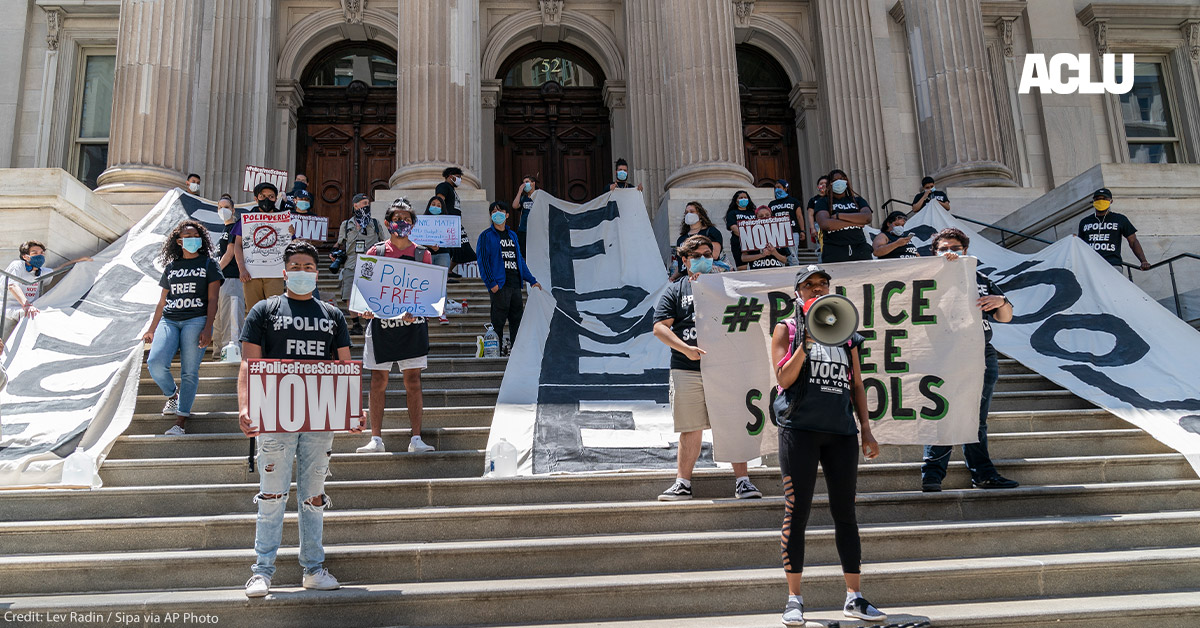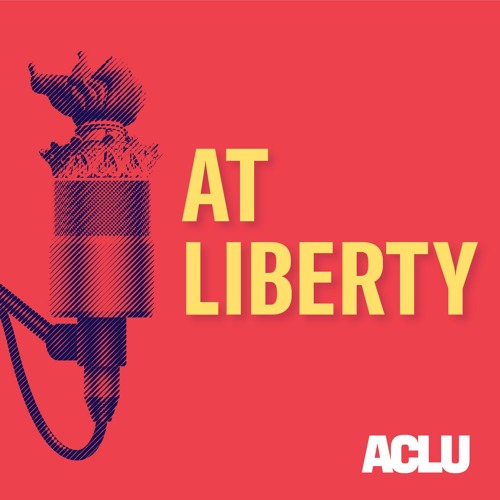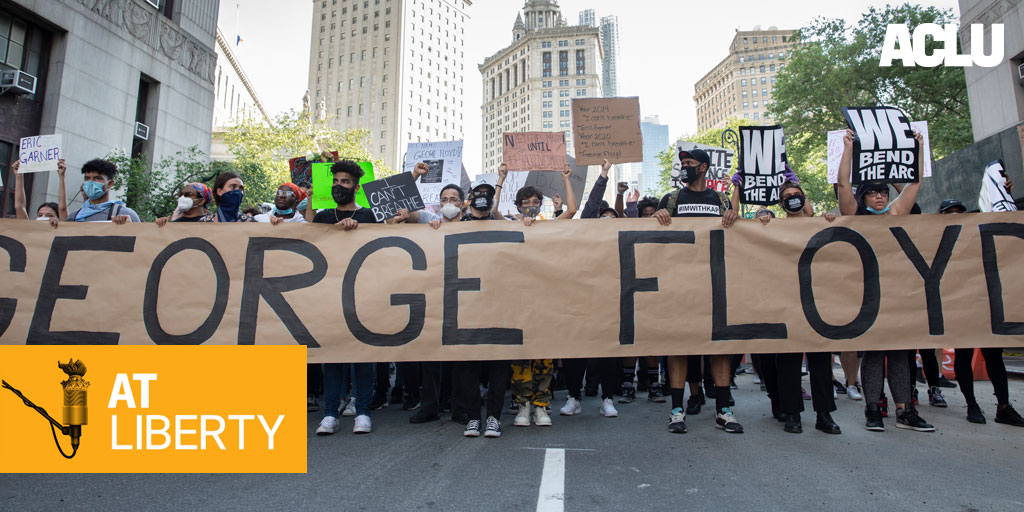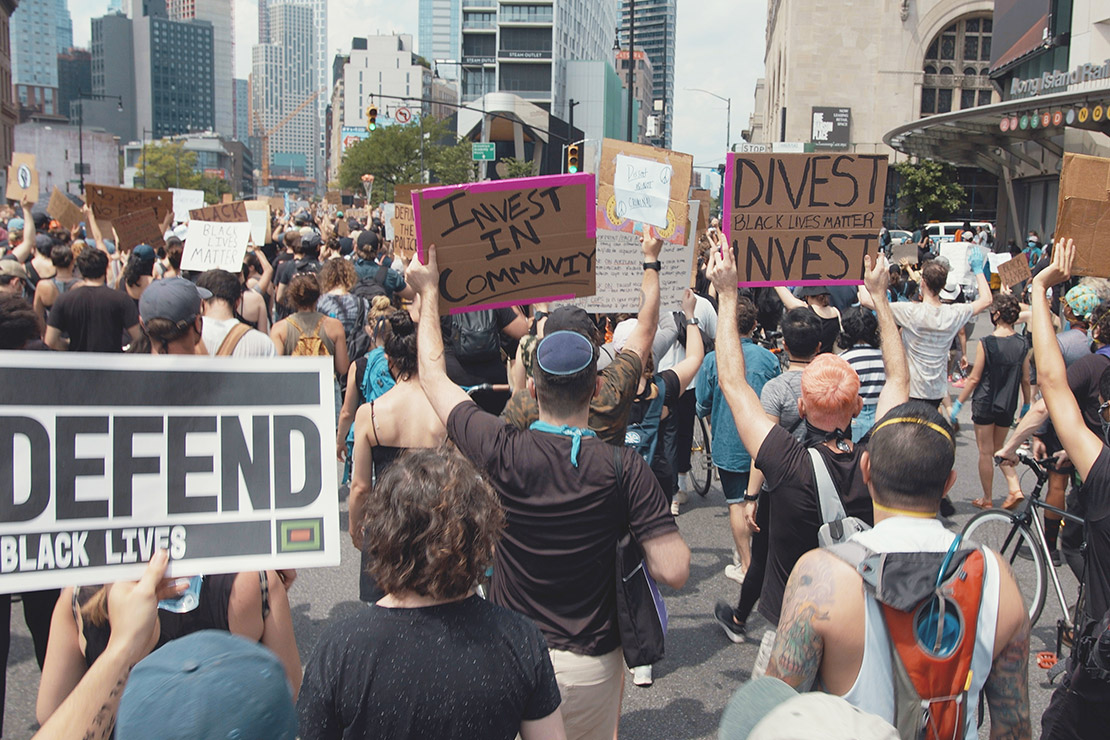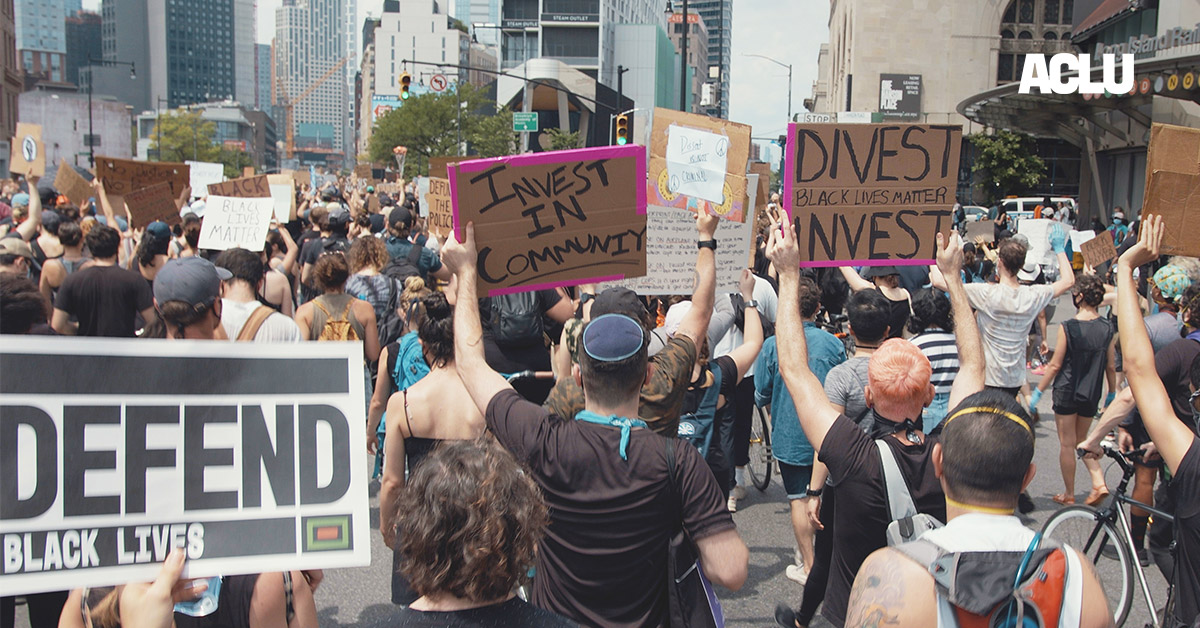By West Resendes, ACLU Skadden Fellow
Across the country, communities are pushing their schools to divest funding from police and reinvest those funds in student mental health care and other supportive services. But in making their case to their respective school boards, these parents, students, and advocates have run into one significant barrier — outdated data on policing in schools.
Every other year, the Department of Education collects and eventually releases to the public data that shows the number of student referrals and arrests made by police (including school resource officers (SROs)) in public schools, and which students are most impacted. The data includes students’ ages, gender, race, and whether they have a disability. Time and time again, this data has shown students of color and students with disabilities are disproportionately referred to and arrested by police in schools.
The data also includes staffing data detailing how many counselors, social workers, school psychologists, and nurses are in schools compared to law enforcement officers or SRO presence. This data is crucial for understanding how police in schools have fueled the school-to-prison pipeline, and the dire discrepancies in funding for mental health personnel in schools compared to funding for policing our students.
The Department of Education has been collecting arrest and referral data for the last 10 years through the Civil Rights Data Collection (CRDC) — a collection they have administered since 1968. The data from the 2015-2016 school year, released in April 2018, is the last data set that was released to the public.
Now, the Department of Education is sitting on the most recent data from 2017-2018 and has neglected to release it publicly.
This is why we’ve filed a Freedom of Information Act request to address the Department of Education’s inaction and call on them to release this data set. This data is needed across states and localities to inform policy reform amidst a growing movement to divest police from our schools. We know that the number of police officers in schools is steadily rising, but we don’t know if the numbers of school-based mental health staff have been keeping pace. Holding this data hostage prevents us from making the most informed decisions we can for our schools and how we can allocate funds.
The Impact of Policing on Our Disabled Students, Students of Color, and Disabled Students of Color
If historical trends in the data hold true, law enforcement in schools will continue to disproportionately target students of color, students with disabilities, and students of color with disabilities.
Black and Indigenous students, students of color (BIPOC), and students with disabilities often have to attend schools with fewer resources and support and school staff that are often not adequately trained and staffed to accommodate children with disabilities. When there are no other support staff to address behavioral problems, some teachers request help from law enforcement. This is where things often go awry. Police in schools do what they are trained to do — detain, handcuff, and arrest. Past data analyzed by the ACLU shows that schools with police reported 3.5 times as many arrests as schools without police.
Just as with the concentration of policing in low income communities of color, policing in schools is also racialized. Our report, “Cops and No Counselors” analyzed CDRC data from 2015 to 2016 and found students of color are more likely to go to a school with a police officer, more likely to be referred to law enforcement, and more likely to be arrested at school. Nationally, Black students are more than twice as likely as their white classmates to be referred to law enforcement. Black students are three times as likely to be arrested as their white classmates, and in some states, Black girls are over eight times as likely to be arrested as white girls. During the 2015-16 school year, 1.6 million students attended a school with a sworn law enforcement officer and no counselor.
What makes a child most likely to be targeted by a police officer while in school? Simply having a disability. Overall, students with disabilities were nearly three times more likely to be arrested and referred than students without disabilities (and this disparity increases up to tenfold in some states), and the risk is multiplied in schools with police.
If a child has a disability, and they are also a student of color, the odds are even worse. For instance, in Rhode Island, Native American students are referred to law enforcement at a rate five times the national average. But Native American boys with disabilities are arrested at a rate almost 7.5 times the national average. Black and Latino boys with disabilities represent only 3 percent of students nationally, but account for 12 percent of school arrests. Black boys are also often labeled as “emotionally disturbed” or simply “bad” when non-compliant behavior occurs — whether or not they have an emotional or behavioral disability — and those behaviors disproportionately lead to a law enforcement response rather than a supportive response through appropriate accommodations.
Schools have consistently chosen policing over implementation and expansion of mental health resources that support our students. During the 2015-16 school year, 1.6 million students attended a school with a sworn law enforcement officer and no counselor. We know from the 2013-14 school year data that Black students were 3 times more likely to attend a school with more security personnel than mental health personnel. What will the story of the 2017-18 school year data tell us?
Next Steps: Demanding More Transparency
The Department of Education is not solely to blame for us not seeing this data now — many states and large school districts also lack transparency in publishing this data, in violation of both the CRDC and the federal Every Student Succeeds Act (ESSA). As my colleague Harold Jordan has discussed, states and local education agencies are required under ESSA to publish annual “report cards” on measures of school quality, climate, and safety, including information on school-related arrests and referrals to law enforcement. An internal review shows that the vast majority of states do not have current policing data available on their websites — often only the 2015-16 data their districts reported to the CRDC — and that’s if they reported the data at all.
“Every district should have already posted that data in their school and district report cards for the 2017-18 school year,” Daniel Losen, director of the Center for Civil Rights Remedies at UCLA’s Civil Rights Project cautions. “Very few did so. We are concerned we will see with the release of the ’17-‘18 data that a lot of districts have once again failed to report their data, which means they violated civil rights law. And one reason is that there is no accountability when districts fail to report the required data. We anticipate that about half of the largest districts will report zero arrests.”
This is a funhouse mirror of reality where some districts and states feel that the Civil Rights Data Collection and the ESSA reporting requirements do not apply to them. Districts and states must do better to comply with federal law and maintain transparency for their communities.
In the meantime, the Department of Education has not yet released this data while communities and policymakers are making crucial decisions about the role of law enforcement in our schools. Having this data is more pertinent than ever. We need to be able to document what our Black, Brown, Indigenous, and disabled communities already know: that policing in schools is harmful for our students.
The Department of Education is officially on notice. States and school districts are too. Communities need this data immediately to help inform important policy decisions that will best serve our students. We need the data to be accurate and provided now to show our policymakers why we must divest from police, and invest in helping our students succeed.
